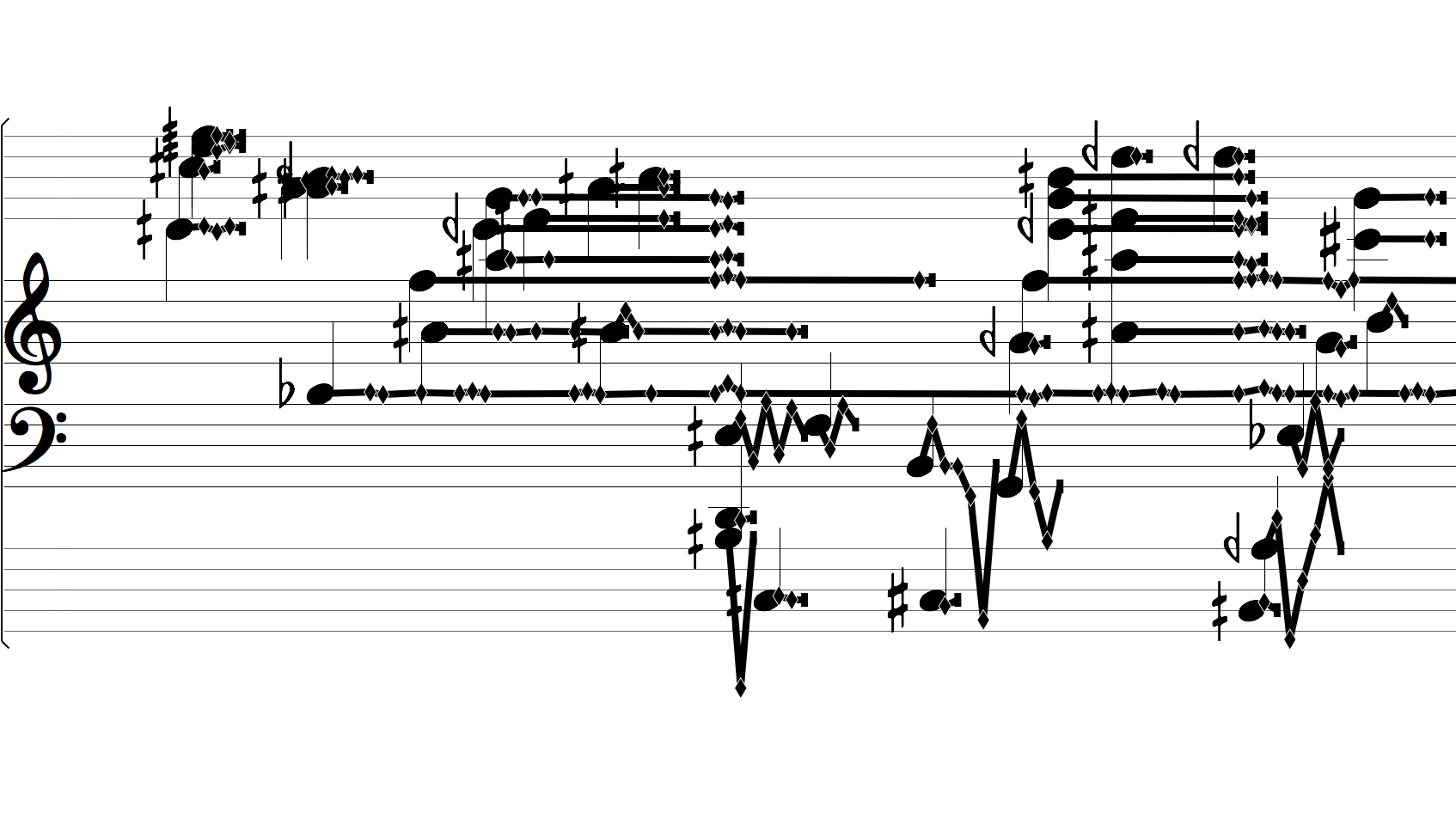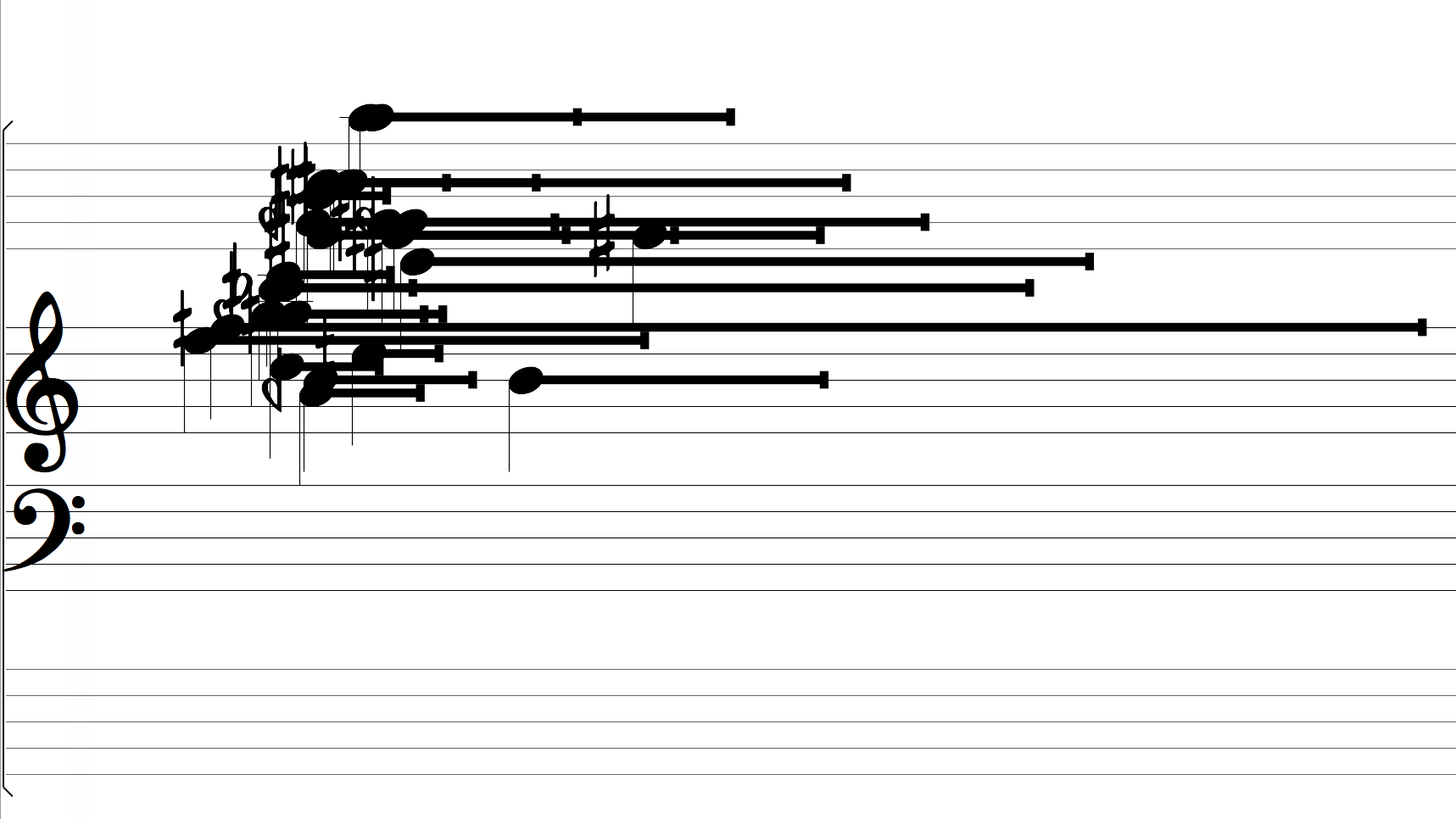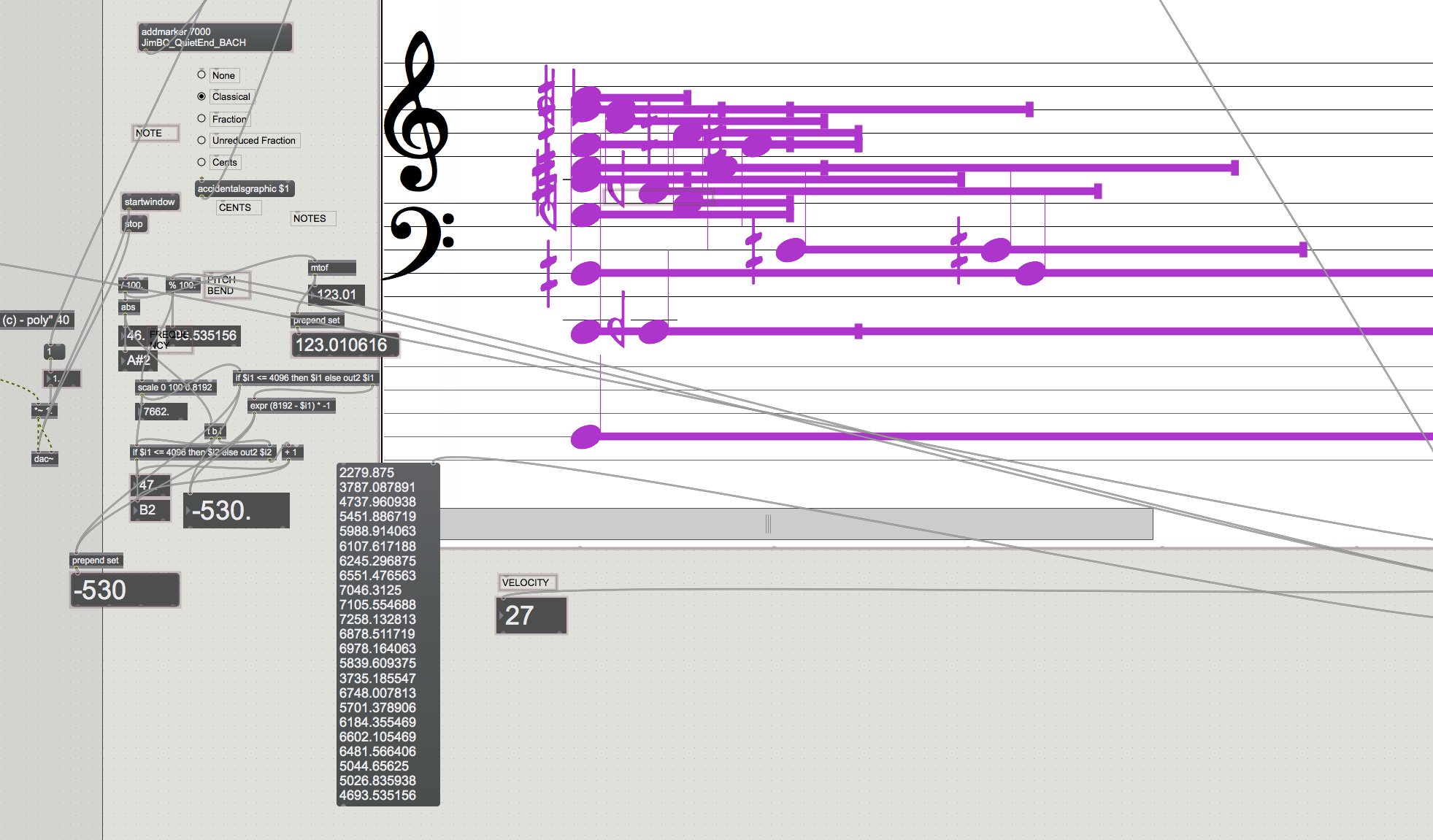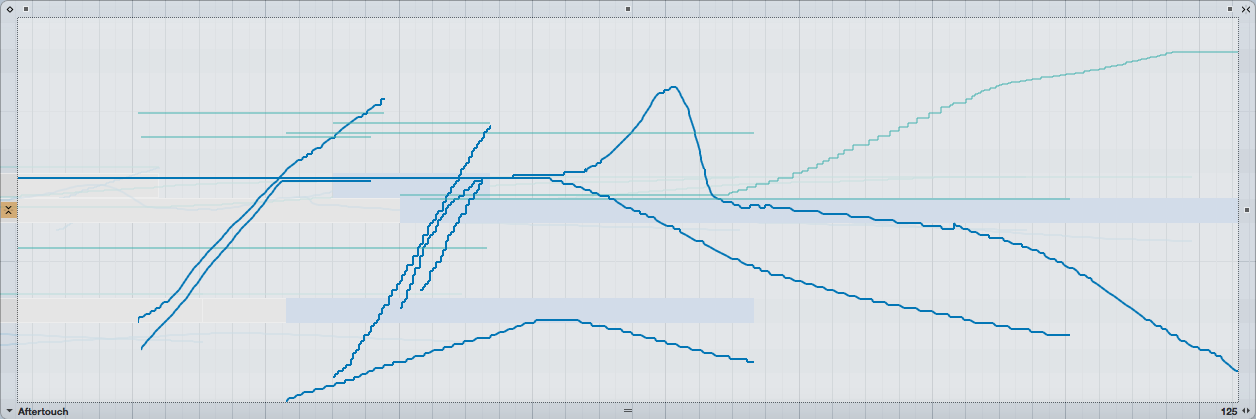We're excited to share some insights into the thought processes of our composers and visual artists with our new blog. We'll be sharing ideas, sounds, and images as we lead up to our show on August 31st at the Theatre at The Ace Hotel. This week we start with Deru.
The name for this show is "V", or five, and while doing some research we came across the idea that in numerology, 5 represents the "symbol of the incarnated conscience: 4, Matter, + 1, Spirit", and as a way to unify the show we've begun thinking about our creative theme as being: "Spirit Into Matter".
The hopes with my piece, therefore, is that I can extract the 'life' out of the acoustic instruments on stage by analyzing them and playing with their pitch data in interesting ways.
I'm also continuing my exploration into partials and microtonality that started while writing my piece for our last show, "Veils". Complex sounds, like acoustic instruments, have a series of sine waves at various frequencies and amplitudes that combine to form the original sound. So a partial is any of these individual simple sine waves that compose a complex sound. Because acoustic instruments aren't electronically generated you end up with partials at frequencies that don't fit into western scales, so you end up with microtonality. This form of microtonality has opened up a huge world of colors for me, and they are colors that I love. The sounds evoke feelings that don't seem to exist in our normal 12-tone scales. They are 'other' and 'dark' but they also make sense and have a system to them.
My piece will be based on percussion, so I've been analyzing the partials of the various instruments that will be on played stage, with the aim of being able to blur the lines between the instruments played acoustically and the electronics coming out of the speakers.
I've also been playing with the beat frequencies that occur when pitch shifting two partials against each other, as a source of rhythm onto itself.
I hesitate to give too much away in terms of sound, but below are two quick examples. The first one is a brake drum (see photo above) being struck and some sine waves, playing back the exact frequencies of the partials in the recording, taking over. The second is a bowed cymbal with sine waves extending and playing with the partials over time.
I'd like to leave this post about technique over content for the time being, as I have quite a few surprises that I'd like to leave as surprises, but this space will update regularly as our composers and collaborators share their processes and thoughts.
- Benjamin Wynn / Deru








